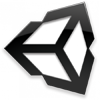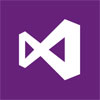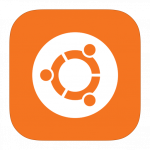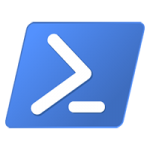Category Archives: Software Releases
Unity 5 has been released
Unity is a cross-platform game creation system developed by Unity Technologies, including a game engine and integrated development environment which is used to develop video games for web sites, desktop platforms, consoles, and mobile devices. Unity has been extended to target more than fifteen platforms and is now the default software development kit for the Wii U.
This release brings forth a lot of new sought out features like:
- The Physically-based Standard Shader to make your materials look consistent in any lighting environment, cross platform.
- Real-time Global Illumination, built on Geomerics Enlighten technology.
- The Audio Mixer, to massively improve audio in your game.
- HDR Reflection Probes to enhance visual fidelity.
- PhysX 3.3 to bring massive performance improvements to 3D physics.
- Major updates to the animation system.
- WebGL preview.
If you would like to take a closer look at the new features Unity 5 comes with head out to Unity’s Blog post which has all the details.
There are two main versions of the Unity engine, personal edition and professional edition. Unity 5 personal edition comes with all the features the engine has. The main difference between the two versions is that the personal edition does not have the following features:
- Customizable Splash Screen
- Access to Unity Cloud Build Pro
- Unity Analytics Pro
- Team License
- Prioritized bug handling
- Game Performance Reporting
- Beta access
System Requirements
- Windows XP SP2+, 7 SP1+, 8; Mac OS X 10.8+.
- GPU: Graphics card with DX9 (shader model 2.0) capabilities. Anything made since 2004 should work.
If you would like to download the Unity 5 game engine, click the link below.
Posted in Software Releases.
Tagged game engine, Unity, Unity 5
How to keep your screen always on
On most systems this can be configured by going to Control Panel --> Power Options --> Choose when to turn off the display, but there are always some situations that this solution will not suffice. As an exmaple, the last time I faced this problem, Active Directory’s settings were overriding my system’s settings, which caused my display to turn off every 5 minutes regardless of how much I tried to tweak it using the Power Options.
As a workaround I decided to create a small application that would just keep the screen from turning off. I decided to share it with you in case you ever find yourself in a similar position.
You can download the program here.
If you know a bit about programming you can take a look at the source code below that will give you an idea on how this is achieved.
1 2 3 4 5 6 7 8 9 10 11 12 13 14 15 16 17 18 19 20 21 22 23 24 25 26 27 28 29 30 31 32 33 34 35 36 37 38 39 40 41 42 43 44 | using System; using System.Runtime.InteropServices; using System.Windows.Forms; namespace ScreenAlwaysOn { static class Program { [DllImport("kernel32.dll", CharSet = CharSet.Auto, SetLastError = true)] static extern EXECUTION_STATE SetThreadExecutionState(EXECUTION_STATE esFlags); [FlagsAttribute] public enum EXECUTION_STATE : uint { ES_AWAYMODE_REQUIRED = 0x00000040, ES_CONTINUOUS = 0x80000000, ES_DISPLAY_REQUIRED = 0x00000002, ES_SYSTEM_REQUIRED = 0x00000001 } static NotifyIcon tIcon = new NotifyIcon(); [STAThread] static void Main() { SetThreadExecutionState(EXECUTION_STATE.ES_CONTINUOUS | EXECUTION_STATE.ES_DISPLAY_REQUIRED); ContextMenu menu = new ContextMenu(); menu.MenuItems.Add("Exit", delegate { Application.Exit(); }); tIcon.Icon = Properties.Resources.monitor; tIcon.Text = "Screen Always On"; tIcon.ContextMenu = menu; tIcon.Visible = true; Application.ApplicationExit += Application_ApplicationExit; Application.Run(); } static void Application_ApplicationExit(object sender, EventArgs e) { tIcon.Dispose(); } } } |
The theory behind this solution is very simple. We are using the SetThreadExecutionState windows function to notify the system that the screen should stay on.
Flags Descriptions
ES_AWAYMODE_REQUIRED (0x00000040)
Away mode should be used only by media-recording and media-distribution applications that must perform critical background processing on desktop computers while the computer appears to be sleeping. See Remarks.
ES_CONTINUOUS(0x80000000)
Informs the system that the state being set should remain in effect until the next call that uses ES_CONTINUOUS and one of the other state flags is cleared.
ES_DISPLAY_REQUIRED(0x00000002)
Forces the display to be on by resetting the display idle timer.
ES_SYSTEM_REQUIRED(0x00000001)
Forces the system to be in the working state by resetting the system idle timer.
Posted in C#, Software Releases.
Tagged fluxbytes, fluxbytes software, screen, SetThreadExecutionState
A browser designed for the web developers
Mozilla has released a new version of Firefox that is aimed towards web developers called Firefox Developer Edition.
Apart from the different, darker, theme that can be changed if you so desire, Firefox Developer Edition comes with various new features that can be very helpful to web developers and Firefox extension/OS applications developers.
A few examples are:
Responsive Design View: A feature that allows you to test and see how your websites or web applications will look under different resolutions. Moreover, Firefox Developer Edition comes with a feature called WebIDE. WebIDE enables Firefox OS application developers to write, run and test their applications within the browser itself using simulation. The nice part about this feature is that is allows you to target specific versions of Firefox OS which means you can now test how your application will behave under different versions of Firefox OS with ease.
Valence: Allows you to test your applications across multiple browsers and devices.
Web Audio Editor: Inspect and interact with Web Audio API in real time to ensure that all audio nodes are connected in the way you expect.
Eyedropper: Copy the color of any pixel in the browser simply by mouseovering and clicking on the area you want.
Of course the features above are just an addition to the features the normal version Firefox has which we all know and love.
Overall, although the additions may not be compelling enough to have you rush to install this version, this is surely a step to the right direction since a developer targeted browser is something that a lot of people are interested in.
You can download Firefox Developer Edition by clicking the link below or by visiting Mozilla’s download page.
Posted in Software Releases.
Tagged firefox, Mozilla, Mozilla firefox
Android Studio 1.0 has been released
After two years of development Android Studio has finally reached version 1 and is now available to download for everyone.
This is very important news for Android application developers as the development for the ADT plugin for Eclipse seems to have stopped. This means in order to have access to the latest features you will need to migrate to Android Studio. This is hinted at Android Studio’s home page where it says:
If you have been using Eclipse with ADT, be aware that Android Studio is now the official IDE for Android, so you should migrate to Android Studio in order to continue to receive all the latest IDE updates.
Android Studio is available for Windows, Mac OS X and Linux based systems and can be download at https://developer.android.com/sdk/index.html.
Recommended System Requirements:
Windows
- Microsoft® Windows® 8/7/Vista/2003 (32 or 64-bit)
- 2 GB RAM minimum, 4 GB RAM recommended
- 400 MB hard disk space + at least 1 G for Android SDK, emulator system images, and caches
- 1280 x 800 minimum screen resolution
- Java Development Kit (JDK) 7
- Optional for accelerated emulator: Intel® processor with support for Intel® VT-x, Intel® EM64T (Intel® 64), and Execute Disable (XD) Bit functionality
Mac OS X
- Mac® OS X® 10.8.5 or higher, up to 10.9 (Mavericks)
- 2 GB RAM minimum, 4 GB RAM recommended
- 400 MB hard disk space
- At least 1 GB for Android SDK, emulator system images, and caches
- 1280 x 800 minimum screen resolution
- Java Runtime Environment (JRE) 6
- Java Development Kit (JDK) 7
- Optional for accelerated emulator: Intel® processor with support for Intel® VT-x, Intel® EM64T (Intel® 64), and Execute Disable (XD) Bit functionality
- On Mac OS, run Android Studio with Java Runtime Environment (JRE) 6 for optimized font rendering. You can then configure your project to use Java Development Kit (JDK) 6 or JDK 7.
Linux
- GNOME or KDE desktop
- GNU C Library (glibc) 2.11 or later
- 2 GB RAM minimum, 4 GB RAM recommended
- 400 MB hard disk space
- At least 1 GB for Android SDK, emulator system images, and caches
- 1280 x 800 minimum screen resolution
- Oracle® Java Development Kit (JDK) 7
Posted in Software Releases.
Tagged Android, Android Studio
Microsoft releases Visual Studio Community 2013
Microsoft has released a new version of Visual Studio 2013 that goes by the name of Visual Studio Community 2013.
What is this you may ask? Simply put, Visual Studio Community edition is a free, full-featured development environment designed for open source contributors, students, small companies, start-ups and individual developers.
Visual Studio Community 2013 offers the same of features that can be found in the professional version including the ability to install extensions.
Any individual developer can use the Visual Studio Community edition to create free or commercial apps. As for organizations, if you are a non-enterprise organization, up to 5 of your developers can use the Community edition. Otherwise, for enterprise organizations, you are prohibited from using this version except in cases where your project is an open source project or has to do with academic research and classroom learning.
Visual Studio Community 2013 comes with update 4 build in and can be downloaded at Visual Studio Community 2013 Offline Installer (.ISO / English)
If you are interested in more details or you wish to download a different language of the product, visit Visual Studio’s download page
Supported Operation Systems for Visual Studio Community 2013
- Windows 8.1 (x86 and x64)
- Windows 8 (x86 and x64)
- Windows 7 SP1 (x86 and x64)
- Windows Server 2012 R2 (x64)
- Windows Server 2012 (x64)
- Windows Server 2008 R2 SP1 (x64)
Recommended System Requirements
- 1.6 GHz or faster processor
- 1 GB of RAM (1.5 GB if running on a virtual machine)
- 20 GB of available hard disk space
- 5400 RPM hard disk drive
- DirectX 9-capable video card that runs at 1024 x 768 or higher display resolution
Posted in Microsoft, Software Releases.
Tagged Microsoft, Visual Studio, Visual Studio 2013, Visual Studio Community













